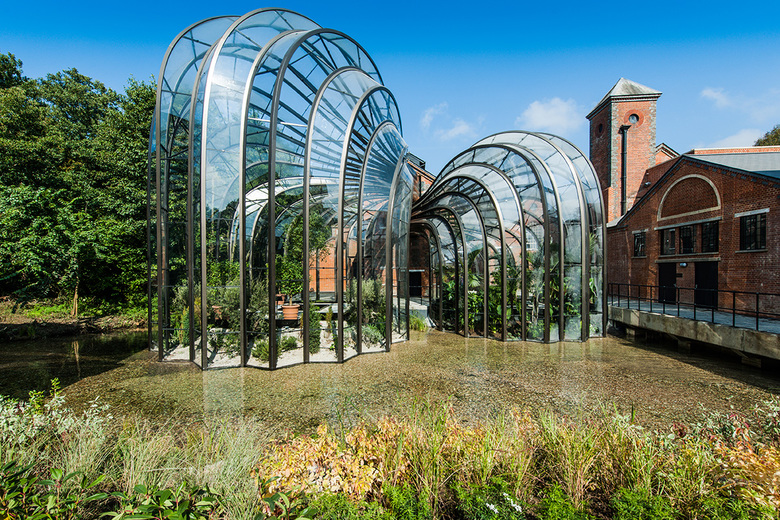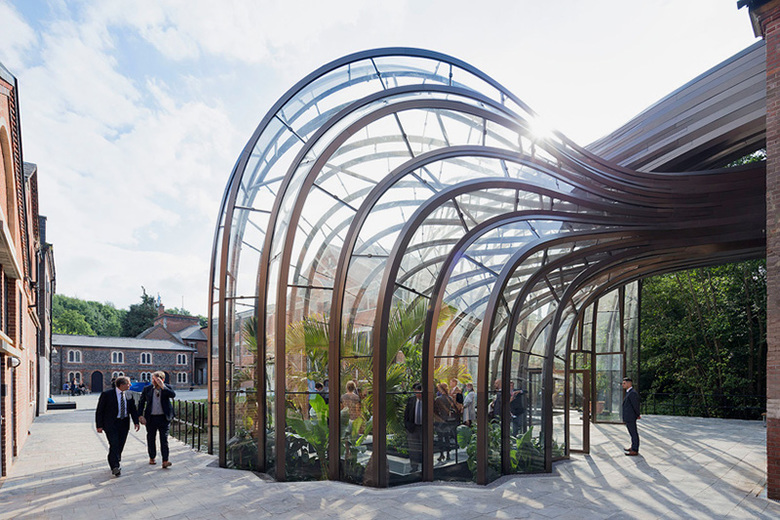Bombay Sapphire Distillery
The gin company's distillery and visitor center at Laverstoke Mill in Hampshire, England, which includes intertwining botanical glasshouses designed by Thomas Heatherwick, open to the public on October 1.
While the glasshouses are the most eye-catching pieces of Bombay Sapphire's new home, Heatherwick Studio did much more than design these almost twin structures. To consolidate the gin maker's previously dispersed operations, the studio renovated 23 of the 40 buildings on the sprawling 18th- and 19th-century industrial site, while tearing down the remainder, which were mainly newer interventions. This helped to make sense of the site and allowed the River Test to become a more visible and meaningful part of the site.
The glasshouses, which house the ten botanicals used in making Bombay Sapphire gin, sit on a widened portion of the river. They literally plug into an adjacent mill building, recycling the heat that is created in the distillation process. Visitors traverse a bridge over the river, skirting the two greenhouses whose curved glass forms have a good chance of becoming the new symbol for Bombay Sapphire.
It should be noted that the relationship between Heatherwick and Bombay Sapphire goes back to 2002, when Heatherwick won the Bombay Sapphire Prize for an unrealized glass bridge. The prize was awarded annually to a design in which glass figured prominently. In the case of Heatherwick's bridge, which was conceived in 1995, the design featured over 1,200 layers of U-shaped glass held in compression. Lit at night, it would have been an amazing engineering feat and sight, even more so than the greenhouses.



